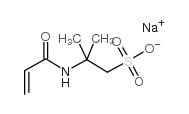| Structure | Name/CAS No. | Articles |
|---|---|---|
 |
2-Acrylamide-2-methylpropanesulfonic acid
CAS:15214-89-8 |
|
 |
2-Acrylamido-2-methylpropanesulfonic sodium salt
CAS:5165-97-9 |